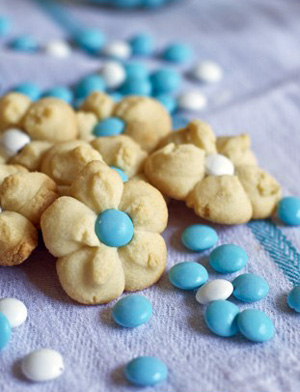 These cookies I hold near and dear to my being. When I was with my grandma, I could simply be me. I could be my sweet self, I could be my bratty self, I could be my intuitive self, and I could be my quiet self. We had a special relationship. I was the youngest of 7 grandchildren and my childhood was riddled with illness.
These cookies I hold near and dear to my being. When I was with my grandma, I could simply be me. I could be my sweet self, I could be my bratty self, I could be my intuitive self, and I could be my quiet self. We had a special relationship. I was the youngest of 7 grandchildren and my childhood was riddled with illness.
I was ALWAYS sick. I was hospitalized with collapsed lungs at the age of 12 and after 20 days, I was released. It was the beginning of summer and that summer, I mostly spent in the house, in bed. I went into the hospital weighing 77 pounds and came out 25 pounds lighter.
My grandma came over every day and made sure I ate. She made me all of my favorite foods; her pasta, chicken and dumplings, matzoh brie (a matzoh version of french toast), egg noodles with cottage cheese + salt (I know, it sounds gross-but it is really good), and so much more. These cookies were in our cookie jar everyday and these cookies make me happy.
As I light the menorah tonight, I will light the candles in honor of my grandma, whom I think about all the time. She gave me a gift, the gift of unconditional love.

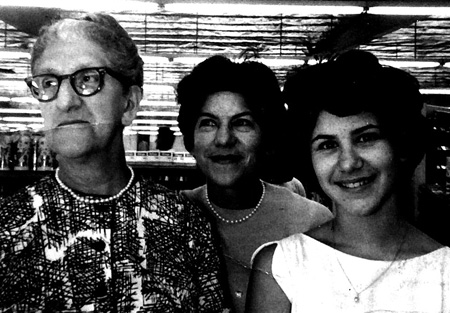 For dinner on the first night of Hanukkah my mother always started with a romaine lettuce salad topped with scallions and Lawry's French Dressing. Then there was a brisket of beef with carrots and mushroom gravy. But the real stars of the meal were the latkes served with apple sauce and sour cream.
For dinner on the first night of Hanukkah my mother always started with a romaine lettuce salad topped with scallions and Lawry's French Dressing. Then there was a brisket of beef with carrots and mushroom gravy. But the real stars of the meal were the latkes served with apple sauce and sour cream.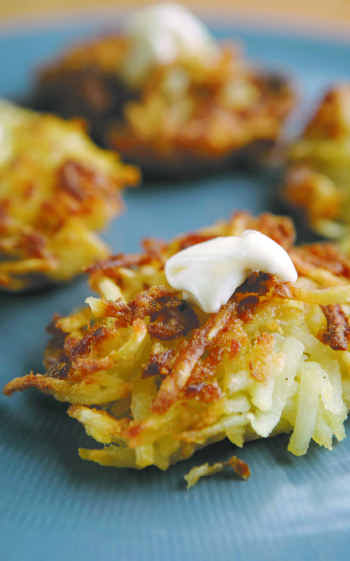
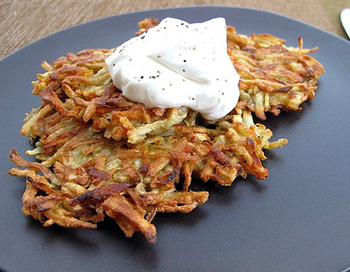 Eating potato pancakes carry many childhood memories for me, especially of summers spent with my paternal grandparents in the countryside of Hungary. I can almost clearly remember myself in the garden right outside the kitchen door, eating them as my mother brought them out, one by one, slathered with jelly or applesauce.
Eating potato pancakes carry many childhood memories for me, especially of summers spent with my paternal grandparents in the countryside of Hungary. I can almost clearly remember myself in the garden right outside the kitchen door, eating them as my mother brought them out, one by one, slathered with jelly or applesauce.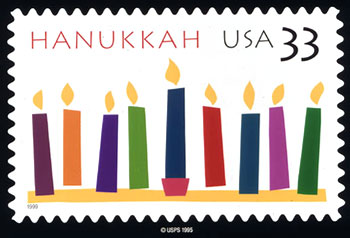 Truthfully, Hanukkah makes me anxious. It’s one of those performance things. Not about making crispy incredible latkes or the homemade applesauce or the chorus of songs after the blessings. No, it’s the presents. Giving exactly the right gift meant you know exactly what the kid needs. A mom’s job, right? Um... Know who they are and you know what they want? Right? Um... Could we call it generalized mother present anxiety syndrome? Hanukah really ups the ante on the whole thing. I mean, Christmas, ok, one day. If you blow it – well, sayonara until next year, baby. But, Hanukah! Eight days! Every night! Really? I mean, who thought of that? Not the Maccabees when they decided they’d had enough of the Greeks.
Truthfully, Hanukkah makes me anxious. It’s one of those performance things. Not about making crispy incredible latkes or the homemade applesauce or the chorus of songs after the blessings. No, it’s the presents. Giving exactly the right gift meant you know exactly what the kid needs. A mom’s job, right? Um... Know who they are and you know what they want? Right? Um... Could we call it generalized mother present anxiety syndrome? Hanukah really ups the ante on the whole thing. I mean, Christmas, ok, one day. If you blow it – well, sayonara until next year, baby. But, Hanukah! Eight days! Every night! Really? I mean, who thought of that? Not the Maccabees when they decided they’d had enough of the Greeks.